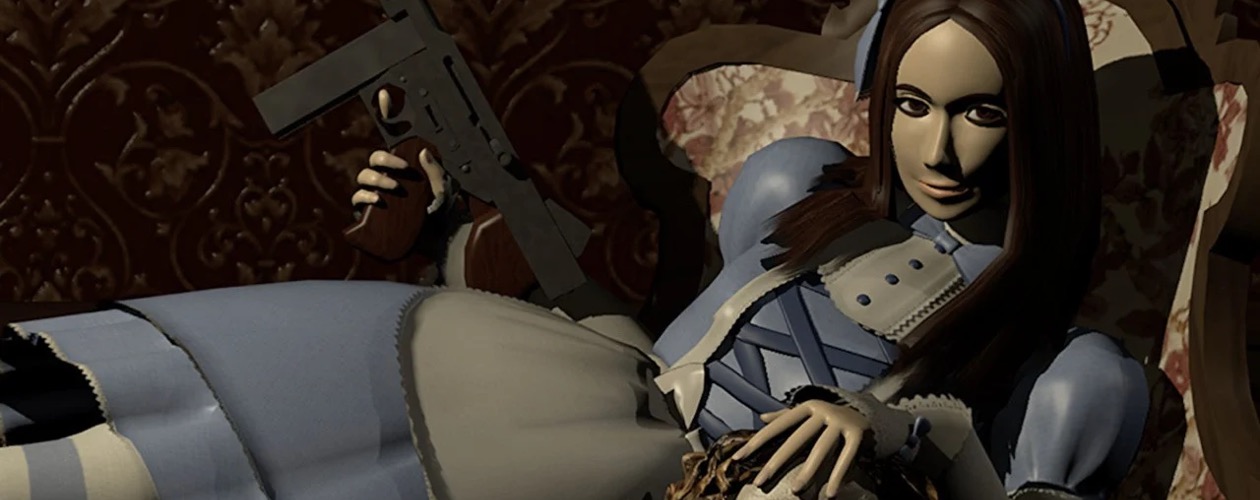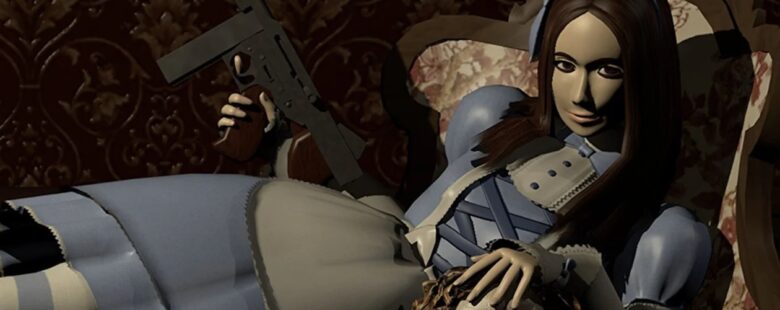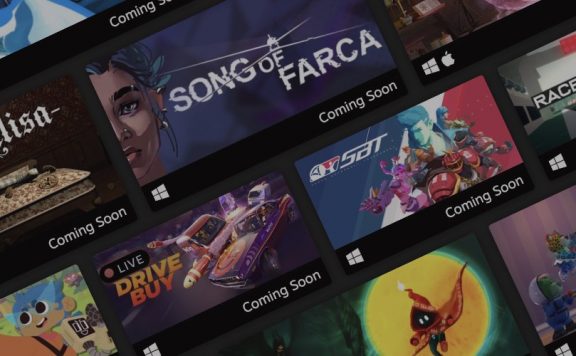I don’t think Sigmund Freud was much of a gamer but if he were, Alisa would probably be his favourite game. Freud’s seminal discussion of the Uncanny remains one of the clearest accounts of what makes certain things incredibly creepy to us – and chief amongst his examples is the animated doll. Alisa takes this creepiness and puts it centre stage, taking an intricate love letter to the origins of survival horror and replacing the zombies with dolls. It makes for a timely and appropriate change of focus.
The opening cutscene to Alisa: Developer’s Cut (as the console version is named) sets the scene for the creepiness to follow as it features a slowed down view of a bullet destroying the head mechanism of a doll. This serves to establish both the similarities and differences to the usual zombie enemies of the genre and is a wonderfully stylish – and stylised – opening. Once past this the start game screen appears. There are a few options available in terms of controls and visuals, the former of which I’ll go into more detail about later, but the main decision to make is whether to start with auto-aim or not. While having this enabled is an initial benefit it limits the currency that enemies drop so I’d advise against it. The game has an icon by your ammo count that changes when you are aiming at an enemy so I’d recommend getting familiar with that instead.
Graphically, Alisa absolutely nails the early PS1 jagged aesthetic. This also applies to the animation as the enemies all boast creepy, uncanny movement that really gets to you. The pre-rendered backgrounds are pure original Resident Evil – the main mansion is almost overly familiar to be honest – and there’s a surprising range of locations to explore. Music is also fabulously unsettling, not least in a circus area that absolutely sent my coulrophobia (fancy name for fear of clowns) into overdrive. Voice acting is another matter, though, as this is spectacularly awful. The credits show that most of the characters are voiced by the main developer and his associates rather than professional actors and this really shows. Having said that, the awful voice acting is clearly both a cost issue and a deliberate nod to the genre’s origins. At one point Alisa escapes a room where the walls are closing in and exclaims ‘I was almost a sandwich’ for example.
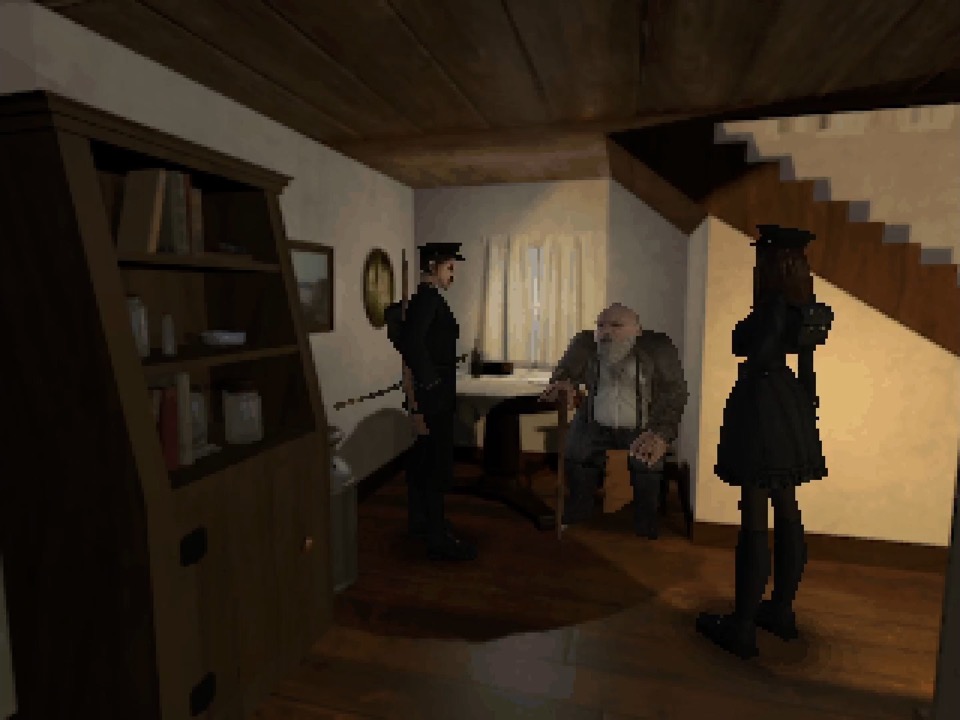
Alisa controls like a classic Resident Evil with tank controls although ‘modern’ ones are available in the options menu. The fixed cameras are far better suited to the former system but I found the PS5 version frustrating here as it doesn’t allow you to set the movement to the D-Pad at all. I really struggle to use analogue sticks for tank controls so I actually moved to the PC version for my main playthrough instead. Hopefully this is something that can be patched by the developer.
The backstory and setting of Alisa are really interesting and I hope that developer Casper Croes gets to do some with this world. Ostensibly set in 1920s France, the game alludes to the after-effects of World War 1 and the social changes that took place through a brief dialogue with the sole resident of an abandoned village. You find yourself here after chasing a thief who has stolen some vital blueprints. Aside from this information, and the fact that you are a military police officer serving some kind of Emperor, you are thrown into the story. This historical setting helps adds to the uncanny vibe of the game as it feels recent enough to be familiar whilst far enough ago to be weird. In more practical terms it also allows for your arsenal of weaponry to feel coherent, with a pistol, revolver, blunderbuss, shotgun, and tommy gun being your main go tos.
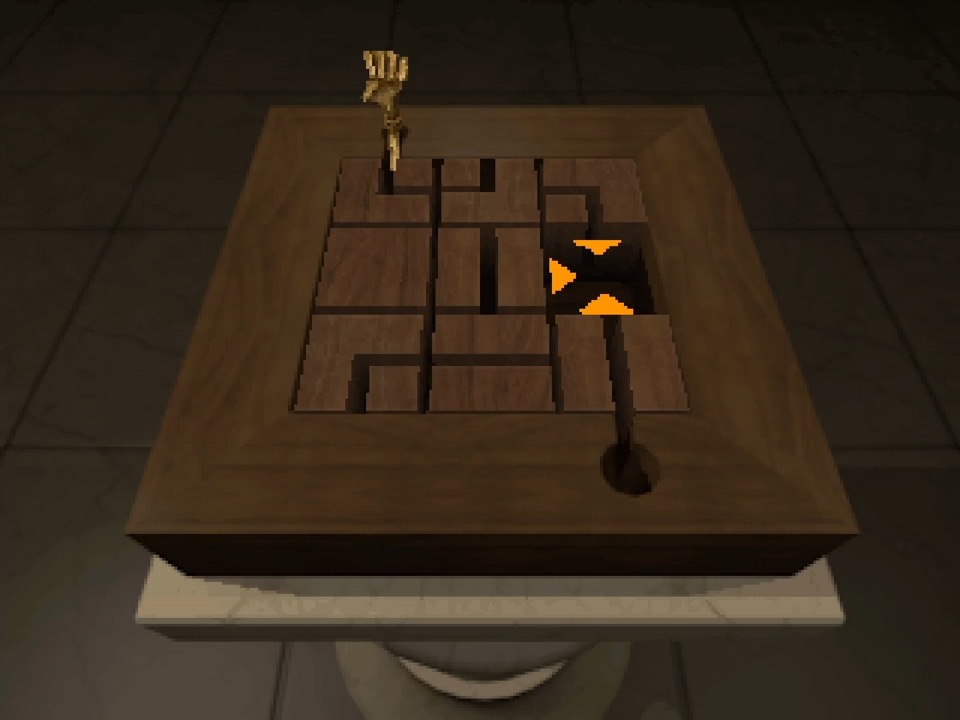
There’s no inventory limit here, which is actually a nice quality of life improvement over the games Alisa is inspired by, but in practice you rarely need to carry many items at a time as your weaponry is stored separately. The numerous keys you find are all kept on a single key ring which absolutely should be the standard as it never makes sense that a key takes up as much space as much larger items. As I said above, weapons aren’t stored in your main inventory, though, as instead you can carry two at a time with the rest being kept in a storage cupboard, along with alternative costumes (the latter of which have different stat boosts and effects). This generally plays out like standard survival horror games as it prevents you from carrying all your guns at once, but the main innovation here is the addition of melee weapons too. Early on you can reclaim your sabre from the ingame store and this proves to be an essential tool once you master the parry system. This helps prevent you from wasting ammo on standard enemies and it can actually be useful against certain bosses too.
Items are found throughout the various environments but can also be bought from the ingame vendor, a puppet called Pol, in exchange for toothwheels, a currency dropped by defeated enemies. You’ll mostly be spending these on ammo and medkits with the occasional new weapon unlocked sporadically throughout the game. It’s vital to keep stocked up for the pretty challenging boss fights, even if most of the normal foes can be cheesed with the sabre once you get the hang of it. These boss fights play pretty well, with one involving a really cool change of perspective, but I managed to accidentally break the final boss by climbing some stairs and shooting it from offscreen which was a little anti-climactic. The puzzles are decent (although one innovative audio-based one requires you to try multiple variations of a 4 digit number even when you’ve solved it) and the boss fights are memorable. It isn’t perfect, however, as there is an unkillable enemy who appears partway through that just proves frustrating as it often blocks your view and prevents you from escaping.
